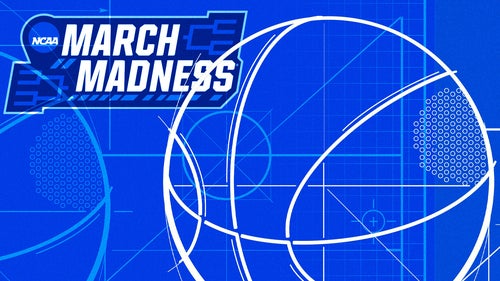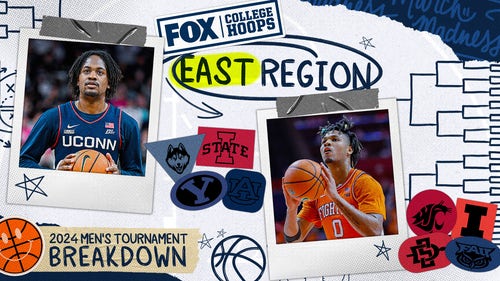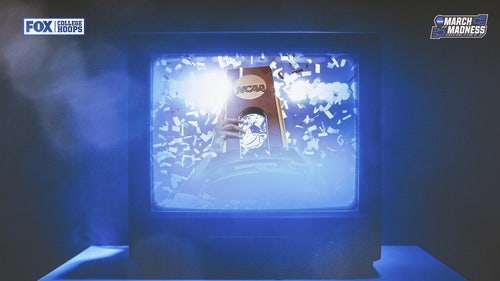“March Madness” is finally here.
Sixty-eight teams will commence play this week, all with the hopes of cutting down the nets on April 8 at State Farm Stadium in Arizona. Thirty-seven programs have won a national title since the tournament’s conception in 1939, with two of the last four winners being first-time champions — Baylor (2021) and Virginia (2019). As the popularity of the tournament has grown in recent years, there has been a focus on the statistical trends that have made up past champions.
FOX Sports Research decided to dive into all the characteristics that make up the tournament champion, examining various metrics while also taking the past into account. Let’s take a look:
KenPom
- 21 of the last 22 national champions (since 2001) ranked in the top 21 of adjusted offensive efficiency when entering the tournament; the lone exception was 2014 UConn (ranked 57th).
- 19 of the last 22 national champions (since 2001) ranked in the top 31 of adjusted defensive efficiency when entering the tournament; the three teams that did not were 2021 Baylor (ranked 44th), 2015 Duke (ranked 37th), and 2009 North Carolina (ranked 37th).
- Teams that are currently ranked in the top 21 of adjusted offensive efficiency and top 31 of adjusted defensive efficiency: UConn, Purdue, Duke, Arizona, Auburn, Creighton, Houston, Marquette
- Every national champion since 2001 was ranked in the top 25 of adjusted efficiency margin when entering the tournament, and 21 of the 22 were ranked in the top 20; the lone exception was 2014 UConn (ranked 25th).
- 23 of the last 24 national champions (since 1999) had a final (NOT pre-tournament) strength of schedule rating ranking inside the top 33; the lone exception was 2021 Baylor (ranked 54th).
- Teams that rank in top 21 of adjusted offensive efficiency, top 31 of adjusted defensive efficiency, top 25 of adjusted efficiency margin, and the top 33 of strength of schedule: Purdue, Arizona, Creighton, Houston, Marquette
- 11 of the last 16 national champions (since 2007) ranked within the top 111 of Division-I in effective height; the exceptions were 2016 Villanova (ranked 148th), 2018 Villanova (ranked 228th), 2021 Baylor (ranked 251st), 2022 Kansas (135th).
- Only two of the past 16 national champions (since 2007) ranked inside the top 150 of Division-I in bench efficiency- 2013 Louisville (ranked 149th) and 2017 North Carolina (ranked 69th).
- Only seven of the past 16 national champions (since 2007) ranked inside the top 105 of Division-I in experience — 2007 Florida (ranked 102nd), 2008 Kansas (ranked 53rd), 2009 North Carolina (ranked 60th), 2010 Duke (ranked 69th), 2014 UConn (ranked 67th), 2017 North Carolina (ranked 103rd), 2021 Baylor (ranked 85th).
Seeding
- 15 of the last 22 national champions (since 2001) were No. 1 seeds.
- Two teams were No. 2 seeds (2016 Villanova, 2004 UConn).
- Three teams were No. 3 seeds (2011 UConn, 2006 Florida, 2003 Syracuse).
- One team was a No. 4 seed (2023 UConn).
- One team was a No. 7 seed (2014 UConn).
- Since seeding began in 1979, 71 of the 88 teams to reach the title game have been top-3 seeds.
- Five of the past six champions have been No. 1 seeds, as well as 12 of the past 16.
- It has been 11 seasons since the overall No. 1 seed won the title (Louisville in 2013); eight of the 19 previous overall No. 1s lost in the Sweet 16 or earlier.
- The overall No. 1 seed has only won the NCAA Tournament three times since the committee began ranking in 2004 (2007 Florida, 2012 Kentucky, 2013 Louisville).
- No team has ever won a national championship after losing its first game in the conference tournament.
- A No. 5 seed has never won a championship, the only top-8 seed that hasn’t.
Other Trends
- The last team to win back-to-back titles was Florida in 2006 and 2007; since then, no defending champ has advanced past the Sweet 16.
- A Big Ten team has not won the title since Michigan State did in 2000.
- A Pac-12 team has not won the title since Arizona did in 1997.
- An SEC team has not won the title since Kentucky in 2012.
- Since the tournament’s conception in 1939, the average number of wins the national champion has recorded that season is 25.2; going back to 2010, the average jumps to 27.8 wins.
- Since the tournament’s conception in 1939, the average win percentage of the national champion that season is 87.1%; going back to 2010, the average drops to 84.4%.
- 18 of the last 38 national champions (since 1985) received automatic bids
- Since 1998 (the first year of the Big Ten tournament), 13 of the 25 national champions in that span won their conference tournament; however, only two of the last nine national champions won their conference tournament (2022 Kansas, 2018 Villanova).
recommended

Get more from College Basketball Follow your favorites to get information about games, news and more









